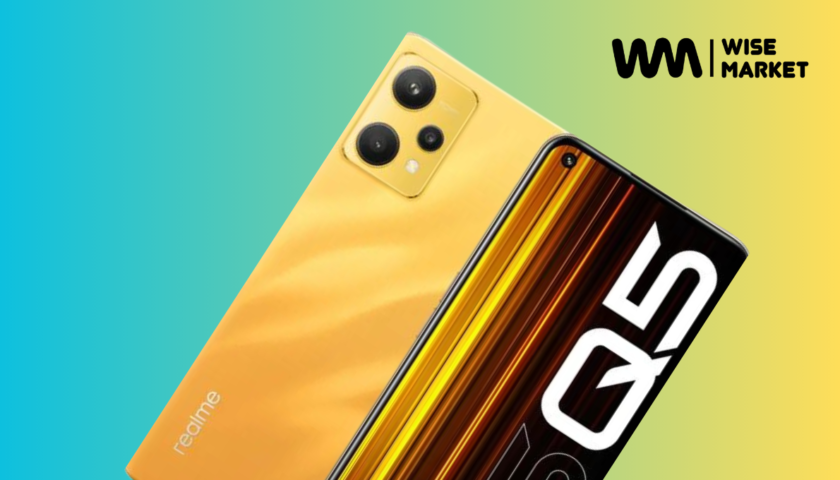The digital age has been characterized by the relentless pursuit of faster, more reliable wireless connectivity. Each generation of wireless technology has brought us closer to the dream of seamless, instantaneous communication, and with the rollout of 5G networks, we have reached a significant milestone. However, the future of wireless connectivity extends far beyond 5G, promising even more substantial speed, efficiency, and innovation. In this exploration of “5G and Beyond,” we’ll delve into the evolution of wireless technology, the potential of 5G, and the exciting horizons of the next generation of wireless connectivity.
The Evolution of Wireless Technology: From 1G to 5G
The journey of wireless technology began with the introduction of the first generation, 1G, in the early 1980s. These networks were analogue and primarily supported voice calls. The subsequent generations brought significant advancements:
2G (Second Generation): 2G networks introduced digital signals, enabling text messaging and simple data services.
3G (Third Generation): 3G marked the advent of mobile internet access, allowing users to browse the web and send multimedia messages.
4G (Fourth Generation): 4G networks brought about high-speed internet, enabling video streaming, online gaming, and the proliferation of mobile apps.
5G (Fifth Generation): 5G, the current state-of-the-art, offers dramatically increased bandwidth, lower latency, and the capacity to connect an unprecedented number of devices simultaneously. It paves the way for applications like augmented reality (AR), virtual reality (VR), and the Internet of Things (IoT).
Unpacking the Potential of 5G
The deployment of 5G networks has ignited excitement and curiosity worldwide. But what exactly does 5G bring to the table, and how will it shape the future of wireless connectivity?
1. Speed and Low Latency: 5G is synonymous with speed. It promises download speeds up to 100 times faster than 4G, reducing latency to mere milliseconds. This enables real-time experiences, from lag-free gaming to instant video streaming.
2. IoT Revolution: The Internet of Things will flourish under 5G’s umbrella. With its ability to connect a massive number of devices concurrently, 5G will support smart cities, connected vehicles, and efficient industrial automation.
3. Enhanced Mobile Broadband: 5G networks will provide a seamless experience for mobile broadband users, enabling high-quality video calls, 4K streaming, and immersive AR/VR applications.
4. Mission-Critical Applications: 5G’s reliability makes it suitable for mission-critical applications like remote surgery, autonomous vehicles, and industrial automation, where reliability and low latency are paramount.
5. Rural Connectivity: 5G isn’t limited to urban areas. It has the potential to bring high-speed internet to underserved rural regions, closing the digital divide.
The Challenges and Hurdles of 5G
While 5G holds immense promise, it’s not without its challenges. One significant issue is infrastructure. The rollout of 5G networks requires a dense network of small cells, which can be expensive and logistically complex. Additionally, concerns about the health effects of increased exposure to radiofrequency radiation have sparked debates and regulatory scrutiny.
Looking Beyond 5G: The Future of Wireless Connectivity
Even as 5G unfolds its potential, researchers and tech visionaries are already setting their sights on what comes next. What lies beyond 5G, and how will it redefine the future of wireless connectivity?
1. 6G: The Next Frontier
The most obvious successor to 5G is 6G. While it’s still in the conceptual phase, 6G is expected to push the boundaries of wireless technology even further. It may offer terabit-per-second speeds, holographic communication, and seamless integration with satellite networks. Researchers envision 6G as the enabler of truly immersive experiences, with applications that extend to the far reaches of augmented reality, AI-driven telepathy, and even mind uploading.
2. Satellite Internet
Low Earth Orbit (LEO) satellite internet constellations are poised to disrupt the traditional broadband market. Companies like SpaceX, OneWeb, and Amazon’s Project Kuiper are launching thousands of satellites to create global networks that can deliver high-speed internet to remote and underserved areas. These systems are expected to be pivotal in bridging the digital divide.
3. Neuromorphic Computing and Brain-Computer Interfaces
Beyond conventional wireless networks, the future of connectivity might involve direct interfaces with the human brain. Neuromorphic computing and brain-computer interfaces (BCIs) are fields of research that aim to establish direct communication between the brain and digital devices. While these technologies are still in their infancy, they hold the potential to redefine human-machine interaction.
4. Quantum Internet
Quantum internet is a concept that relies on the principles of quantum mechanics to enable ultra-secure and high-speed communication. Quantum entanglement, quantum teleportation, and quantum key distribution are all elements of this emerging technology. Quantum internet could revolutionize cryptography, ensuring unbreakable security for online communication. Students can easily avail the best services of nursing assignment writing service UK too.
5. Beyond Planet Earth: Interplanetary Internet
As humanity ventures further into space exploration, the need for an interplanetary internet becomes evident. NASA’s Delay/Disruption Tolerant Networking (DTN) protocol is one example of technology developed to support communication between spacecraft and Earth, even when there are significant delays or disruptions in the signal.
Conclusion: Toward a Connected Future
The evolution of wireless connectivity is a testament to human ingenuity and our insatiable appetite for progress. From 1G to 5G and beyond, each generation of wireless technology has reshaped our world, connecting us in ways once thought impossible. As we stand on the cusp of 6G and explore the frontiers of satellite internet, brain-computer interfaces, quantum communication, and interplanetary networks, one thing is sure—the future of wireless connectivity promises to be as awe-inspiring and transformative as the journey that has brought us here. Our interconnected world is evolving, and we are the pioneers of this connected future.
As we look to the future, the trajectory of wireless connectivity seems boundless. 6G, with its unprecedented speeds and capabilities, holds the potential to make the seemingly impossible a reality. Imagine instantaneous downloads of entire high-definition movies in the blink of an eye or real-time holographic meetings that bridge the gap between physical and digital presence. With 6G, these scenarios could become part of our everyday lives.
Satellite internet, driven by LEO constellations, is set to reshape the global landscape. Remote villages in Africa, the far reaches of the Amazon rainforest, and even research stations in Antarctica may soon have access to high-speed internet, opening doors to education, telemedicine, and economic opportunities previously out of reach.
Neuromorphic computing and brain-computer interfaces profoundly shift how we interact with technology. Imagine controlling devices with mere thoughts or experiencing virtual environments as indistinguishable from reality. These developments could redefine not only how we communicate but also how we perceive and experience the world around us.
Quantum internet, the holy grail of secure communication, promises unbreakable encryption and secure data transmission. It could revolutionize online privacy, cybersecurity, and global business.
The interplanetary internet underscores humanity’s boundless curiosity and ambition. As we set our sights on Mars and beyond, establishing reliable communication networks between Earth and other celestial bodies will be essential for scientific exploration, colonization, and even the prospect of becoming a multi-planetary species. Education assistance can be avail of nursing coursework writing service also.
In conclusion, the future of wireless connectivity is an exciting frontier, offering opportunities that were once confined to science fiction. The journey from 1G to 5G has been remarkable, but the path beyond is even more captivating. We are on the brink of a connected world that transcends boundaries, both on our planet and beyond, where the limits of what we can achieve are defined only by our imagination and determination.





